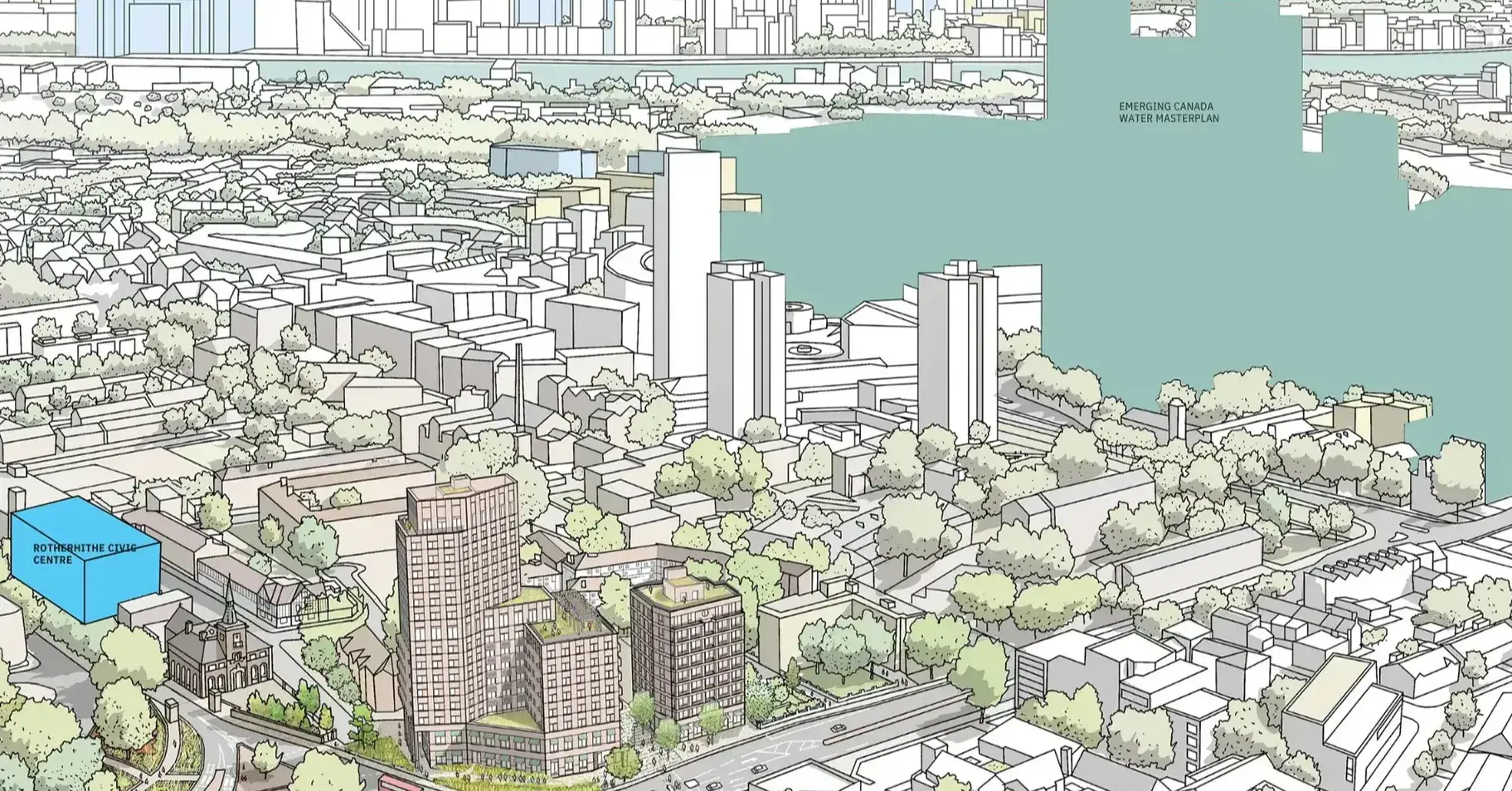Don't Look Back In “Plan”ger
.jpg?width=1920&height=1080&name=637d07b21b83523d7dc3d916_Std%20news%20page%20image%20size%20(2).jpg) There are a few metaphors you could apply to what the planning industry has been going through over the past few years, but I feel the roller coaster is probably the most appropriate. There have been ups and downs, twists and turns, the occasional moment that makes you feel like screaming, but despite all that, we arrive back in the nearly same place we were nearly two years ago.
There are a few metaphors you could apply to what the planning industry has been going through over the past few years, but I feel the roller coaster is probably the most appropriate. There have been ups and downs, twists and turns, the occasional moment that makes you feel like screaming, but despite all that, we arrive back in the nearly same place we were nearly two years ago.
Don’t get me wrong, a lot has happened (and simultaneously not happened….) over the past couple of years, so you’d be forgiven for forgetting much of it, and feeling like other parts were aeons ago. Whilst the industry continues to be taken on its turbulent journey, it’s a healthy exercise to look back on what has been.
If nothing else, the past two years have kept us all on our toes, and commentators across the industry poised for the next juicy move to analyse. We’re on our fourth Secretary of State since 2020 (or is it technically fifth?). We’ve had the pleasure of over 750 pages of text to pour over, across two White Papers and one Bill, which is nearly as many as the longest book in the Harry Potter series.
Yesterday the Right Hon. Michael Gove faced the Levelling Up, Housing and Communities Select Committee, answering questions about affordable housing, planning, house building targets, building safety and many other topics - and as we look forward to the next announcement, now seems like a good time to remind ourselves of what we’ve been through, and where we now stand.
2020
Our journey starts on the 6th August 2020. Eat Out to Help Out had just been launched, and lock down restrictions were being eased across the country, and the word “Omicron” hadn’t reached our vocabularies.
Boris Johnson made some bold statements in the foreword, including that “what we have now simply does not work”, promising to reform the system completely, not by piecemeal approach, by having the courage to “tear it down and start again”.
Jenrick (remember him?) in his own opening remarks said that “Reforming the planning system isn’t a task we undertake lightly, but it is both an overdue and a timely reform”.
Grand ambitions, sounds impressive, and much of what was within the White Paper boasted bold reforms; a more zonal approach in Local Plans, with Growth, Renewal and Protected areas; general development management policies to be set out nationally (sounds familiar…); abolition of the Duty to Cooperate; new standardised templated digital and map-based Local Plans; digital first approaches across the planning system; a focus on beauty and design codes; reform of the Community Infrastructure Levy; a nationally determined, binding housing requirement (Truss was likely quaking in her boots - the Stalinists at it again…) - and we’re only just scratching the surface here.
Well. That didn’t last long….
2021
Roll on June 2021, and a by-election for a safe Conservative seat in Buckinghamshire. So safe, it had been Conservative since its creation. Or so they thought. Lib Dem Sarah Green took the seat, overturning a 16,000 majority, in a big upset, and much of the reasoning was attributed to local opposition to HS2, as well as the government’s planning reforms.
Good bye, White Paper, it’s been nice knowing you…
Summer of 2021 also brought with it a new NPPF, focussing on “building beautiful places”, bringing the word “beauty” back into the planning system for the first time since 1947. In the same week, Liverpool’s historic waterfront became only the third ever listing to be struck from UNESCO’s World Heritage List, due to “irreversible loss of attributes conveying the outstanding universal value of the property” - making changes to the NPPF seem even more poignant.
We also were introduced to the National Model Design Code, outlining a process and advice to local planning authorities to follow when producing codes, as well as the Office for Place, in what was a busy day for the then Ministry of Housing, Communities and Local Government.
After a spicy two year tenure, Robert Jenrick was finally given the boot by Boris in September 2021, and was replaced by political big hitter, Michael Gove, who almost immediately rebranded the department to include the government’s flagship policy piece, to become the mouthful that is the Department for Levelling Up, Housing and Communities.
Cue commentators watching eagerly scrabbling around to try to work out what all these moves mean for the now seemingly abandoned planning reforms…. In November, we got a sneak peek of Gove’s political leanings, when he said that the government will legislate for “street votes”.
2022
The first half of 2022 brought much excitement: the inaugural report from Michael Batty and Wei Yang’s Digital Task Force for Planning and the Levelling Up White Paper gave us plenty of bedtime reading, swiftly followed by the eagerly awaited Levelling Up and Regeneration Bill.
This gifted us plenty of clever puns: what’s LURB got to do with it, it must be LURB - it really was a generous acronym.
The analysts got to work, and goodness me, don’t they have a lot to get on with. 196 Sections of content to grab our attention, covering National Development Management Policies, more Development Corporations, greater importance given to more Heritage Assets, new Environmental Outcome Reports, new Digital Powers, Street Votes, digitisation and simplification of plan making, the introductions to an Infrastructure Levy - it really kept us busy for a good few weeks, with everyone anxious to see more detail come forward about how many of these proposals would actually work in practice.
So we continued to patiently wait, and speculate about what this detail might be, but it felt like finally there was light at the end of the proverbial tunnel.
A hazy summer with 40 degree weather, the Lionesses doing the country proud, and a platinum Jubilee passes. We’re brought swiftly back to reality with a new PM and new Minister of State.
The Truss Clarke combo brought with it speculation; what would happen to the reforms? Is this the last we’d see of the apparently Stalinist housing targets? What would actually happen in the newly announced “Investment Zones”?
That didn’t last long…
44 days, and one very spritely looking lettuce later and the Truss/Clarke double act was no more. In comes Rishi and…wait…who’s this…this looks like a familiar face…can it be? Well yes it can! Michael Gove returns to office, and the whisperings about the disappearance of the LURB subsided.
The reappointment seemed to suggest a firm recommitment to the levelling up agenda, which the Chancellor’s autumn statement seems to support. The 300,000 house building target lives to see another day (although who knows if we can say the same about the Standard Method), and Investment Zones have had their focus switched to benefit research centres, rather than major development.
Whilst an element of calm has been restored, there is no denying that the Rt Hon Michael Gove still has a gargantuan task on his hands.
Now: So what did Gove say?
On Monday 21st November the LUHC Select Committee had an opportunity to question Gove on a wide range of topics, and the undertone of the answers seemed to strike two key tones; one - it’s key to restore a sense of stability, so everyone settle down please; two - levelling up is back on the agenda.
For those that missed it, the two hour session was full of all sorts of topics. To save you the trouble of watching it back, five key takeaways around planning reform were as follows:
- The figure of 300,000 homes a year was described as a “manifesto target”, and Gove paved the way for potential changes to the Standard Method - calculators at the ready…
- The primary focus for housing need is directed towards urban & brownfield sites
- Key to addressing under supply to the private rental sector are supporting growth and stability, increasing supply, and cracking down on no fault evictions.
- There should be systems in place that if a local authority has an up to date Local Plan then you don’t get speculative development undermining it
- National Development Management Policies are intended to give a universal understanding on matters, and not a “power grab” (his words, not mine..)
Now What?
Well, it feels a little bit déjà vu to say it, but now, we still wait…
There are plenty of clauses to pour through in the Amendment Paper of the Levelling Up and Regeneration Bill, and eyes now turn to the Report Stage, sitting on the 23rd and 28th November 2022.
Safe to say the last two years have been one heck of a ride. This reflection hasn’t even considered building safety, nutrient neutrality, or many of the other themes that the LURB delves into.
But the thing about roller coasters is that for some reason they’re strangely addictive…in the words of the Gallagher brothers…”you’ve got to roll with it”. So let’s stay on for a little while longer and see what the next few years bring us.
VU.CITY Case Studies
See how leading built environment experts are using VU.CITY
Shape Tomorrow’s Cities, Today.
Begin Your Free Trial Now.

-1.webp)


